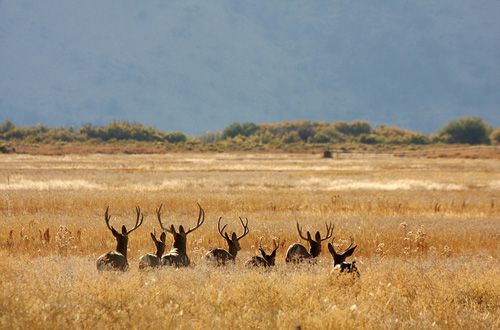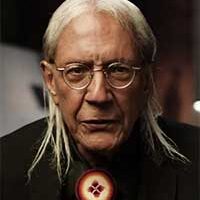
“We were here first,” said Charlotte Rodrique, chairwoman of the Burns Paiute Indian Tribe, whose ancestors lived on what is now the Malheur National Wildlife Refuge, currently occupied by a white militia group. This incident points up, among a host of other issues, the need for the federal government to enforce treaties with American Indian nations, the 371 treaties that have been flagrantly broken by the same government. In fact, touch the surface of any land issue in the United States from Florida to New York, from the Carolina coast to California and at all points in between, and strong and legitimate claims by Indian nations will arise.
All of the U.S. is ancestral Native land fraudulently taken from its rightful owners in the biggest land grab in world history. All of this country is Indian land. The U.S. still legally belongs to Native people. As one Paiute tribal member recently stated, “All lands have been stolen from the Indian tribes.”
On January 2, armed militia, adding historic insult to historic injury, took over federal buildings at the Malheur National Wildlife Refuge, ancestral Paiute Indian land, ostensibly, to protest the sentencing of Dwight Hammond, and his son, Steven Hammond, to prison terms of five years each for setting fire to public lands (note, regarding land occupancy: the Hammonds only purchased their ranch in 1964). This group wants the refuge “returned” to ranchers and loggers.
American Indian reaction to the occupation has been immediate, vehement and sometimes facetiously sarcastic. Typical online comments ranged from “Laugh Out Loud” (LOL) to Facebook memes showing images of the occupiers underlined with “We want our land back.”
Why? Because here are white ranchers, whose ancestors in all likelihood aggressively stole Indian land, complaining that their land is being stolen. It was never their land to begin with.
In this case the land in question belongs to the Paiute people whose occupancy goes back 15,000 years. We must look at the historical background.
The occupied land of the wildlife refuge is comprised of 187,000 acres and was the 19th century Malheur Indian Reservation. This was under the Treaty of 1868, which was never ratified by Congress. Because of this technical shortcoming, the reservation was formally established in 1872 by order of President Ulysses S. Grant.
But white settlers began encroaching on the reservation as soon as it was established. They began requesting boundary changes to the reservation that would reduce Indian land. Grant, under heavy pressure from the land-hungry, Indian-hating settlers, opened for white settlement areas of the reservation on the northern shores of Malheur Lake. This was a severe blow to the Paiute people who gathered important food resources from that area. Conflict increased between Indian and white leading to the Bannock War of 1878.
In January 1879, captured Paiutes and Bannocks were removed in knee-deep snow, many in shackles, from the Malheur Reservation to the Yakama Reservation, 350 miles to the north in present-day Washington state. One group reportedly force-marched by U.S. soldiers simply disappeared. They were never found.
Jubilant at the Indian removal, ranchers and settlers swarmed into the reservation, grazing their herds on the best meadowlands (ultimately upsetting the delicate ecological balance). The U.S. Army did next to nothing to remove these trespassers from Indian land. In fact, the federal government did a complete about face and at the behest of the Indian agent “discontinued” the reservation in October 1879.
Presently, a small group of Paiute live on an allotment of 760 acres, purchased for the Burns Paiute Tribe in 1935 under the National Recovery Act of 1933. This is a few miles northwest of the city of Burns. It is a draconian cutting of the original Malheur Indian Reservation of 1.5 million acres.
Thus the occupiers who “want their land back,” are displaying unmitigated racist gall.
The occupation brings up another point. The whole world is watching the disparity in law enforcement in the U.S. as it relates to Indian and white. As one tribal member put it, “We would be dead by now if we acted like them.” This brings to mind Wounded Knee and the government reaction to occupation by Native people.
The Burns Paiute Tribe has set as its priority the return of the Malheur refuge to reservation status or at the very least maintaining it as a wildlife refuge that will protect its natural and cultural integrity. There are still Indian cultural sites on the refuge and the Paiute people still engage in food gathering in the refuge. Tribal members traverse the area to gather plants for traditional crafts and Native medicine. Cultural items that have found have been in the refuge thousands of years old, giving mute testimony to Indian life on the land since time immemorial.
The forcible removal of the Paiute people from the Malheur Reservation in the 19th century in violation of their treaty rights brings to mind the Trail of Broken Treaties protest in 1972 and the continued failure of the U.S. to live up to its treaty obligations – the law of the land.
Native claims to the land exist all over the country, the only difference being that Indian occupancy in the West, parts of which are comparatively sparsely populated, are of much more recent vintage than in the eastern part of the U.S., but the principle of the legitimacy of Indian claims is all the same. There is even a story still abounding that insurance companies in certain parts of Tennessee are reluctant to provide types of coverage for fear of the resurgence of Cherokee claims arising from fraudulent land taking in the 18th and 19th centuries.
But in the meantime the focal point of the struggle for Indian rights is the sharpest in the West as exemplified by the Bundy group’s occupation of land originally taken in violation of treaty obligations by the federal government. There needs to be a resurgence of the movement for enforcement of the treaties, which would clear up confusion on the part of these johnny-come-lately militias who “want their land back.”
Photo: Mule deer bucks at the Malheur National Wildlife Refuge, Oregon. Barbara Wheeler/U.S. Fish and Wildlife Service










